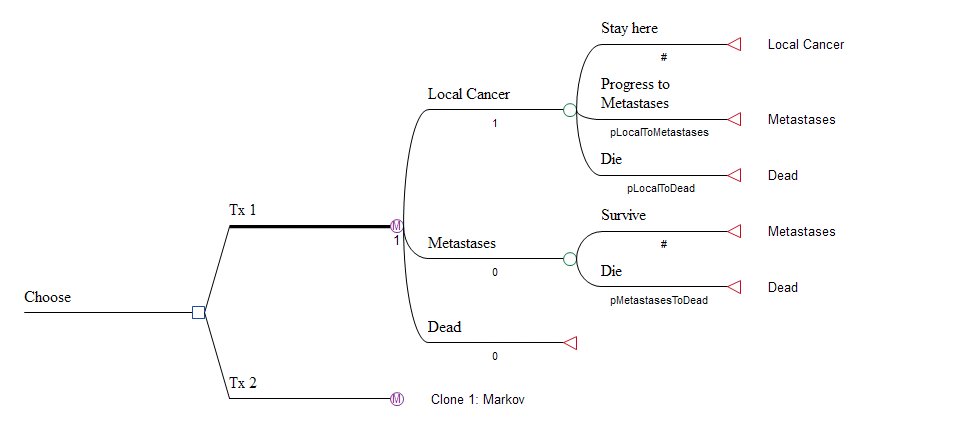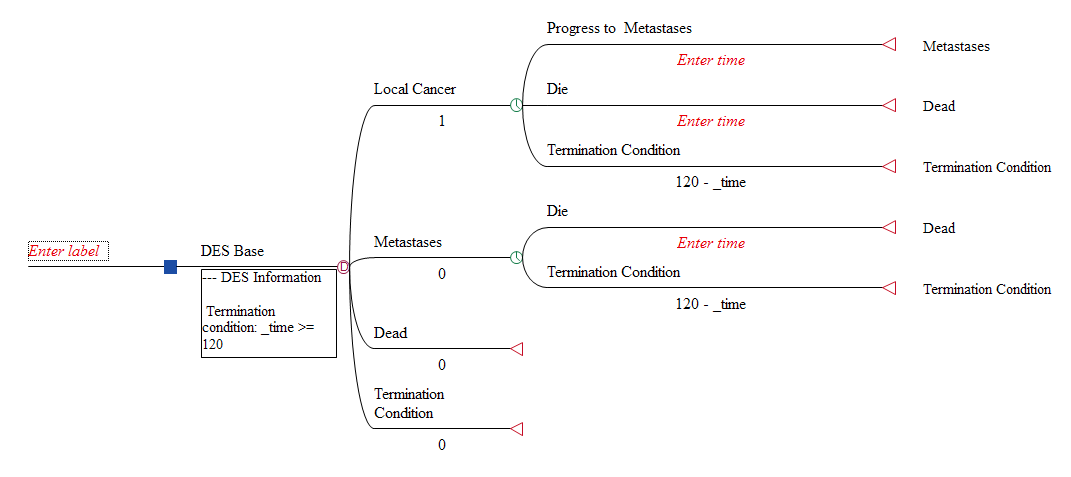43.16 Converting a Markov Model to a DES Model
Modelers who are more comfortable with Markov models might choose to convert an existing Markov model to a DES model rather than build the DES model from scratch. The conversion process does not create a fully functional DES model, but it does create an initial structure which you can modify and add required details.
We will try this process with the Health Care tutorial example model Microsimulation Markov Clone.trex, which is a health state-based Markov model. The resulting DES model will include the same health states, rather than the simpler event loop structure described earlier in this chapter. Both kinds of DES models are valid.

Right-click on the top Markov node and choose Convert to DES from the context menu. This results in the creation of a new model document as shown below.

You will notice a few differences between the Markov model and the DES model.
-
The Markov node is converted to a DES node.
-
The health state Chance nodes are converted to Time nodes.
-
All progressions from a state to any other state is represented by a branch of the DES state time node.
-
Progressions from a state back to itself are not included in the DES model if all probabilities on the path use the complement (#). Typically these are not required in DES models.
-
Progressions from a state back to itself are included in the model if any probability on that path does not use the complement (#). Note there is no such case in this model.
-
An extra absorbing state is added to account for the time horizon, which is required for DES, but not for Markov.
-
References to _stage are replaced by references to _time.
This conversion process does not create a finished DES model. You will still need to create expressions for time-to-event that likely reference distributions. However, this process can still be helpful when creating a DES model.
NOTE: Transitions from a health state back to itself for which all path probabilities are not set to the complement (#) probably need to be included in the resulting DES model. This is especially true if the path contains transition rewards and/or tracker modifications. The conversion process will generate a transition which includes "EVENT?" in the node label.
